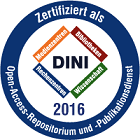Iza-Teran, Rodrigo; Garcke, Jochen: Operator based multi-scale analysis of simulation bundles. In: INS Preprints, 1524.
Online-Ausgabe in bonndoc: https://hdl.handle.net/20.500.11811/11991
Online-Ausgabe in bonndoc: https://hdl.handle.net/20.500.11811/11991
@unpublished{handle:20.500.11811/11991,
author = {{Rodrigo Iza-Teran} and {Jochen Garcke}},
title = {Operator based multi-scale analysis of simulation bundles},
publisher = {Institut für Numerische Simulation (INS)},
year = 2015,
month = nov,
INS Preprints},
volume = 1524,
note = {We propose a new mathematical data analysis approach, which is based on the mathematical principle of symmetry, for the post-processing of bundles of finite element data from computer-aided engineering. Since all those numerical simulation data stem from the numerical solution of the same partial differential equation, there exists a set of transformations, albeit unknown, which map simulation to simulation. The transformations can be obtained indirectly by constructing a transformation invariant positive definitive operator valid for all simulations.
The eigenbasis of such an operator turns out to be a convenient basis for the handled simulation set due to two reasons. First, the spectral coefficients decay very fast, depending on the smoothness of the function being represented, and therefore a reduced multi-scale representation of all simulations can be obtained, which depends on the employed operator. Second, at each level of the eigendecomposition the eigenvectors can be seen to recover different independent variation modes like rotation, translation or local deformation. Furthermore, this representation enables the definition of a new distance measure between simulations using the spectral coefficients. From a theoretical point of view the space of simulations modulo a transformation group can be expressed conveniently using the operator eigenbasis as orbits in the quotient space with respect to a specific transformation group.
Based on this mathematical framework we study several examples. We show that for time dependent datasets from engineering simulations only a few spectral coefficients are necessary to describe the data variability, while the coarse variations get separated from the finer ones. Low dimensional structures are obtained in this way, which are able to capture information about the underlying simulation space. An effective mechanism to deal effectively with the analysis of many numerical simulations is obtained, due to the achieved dimensionality reduction.},
url = {https://hdl.handle.net/20.500.11811/11991}
}
author = {{Rodrigo Iza-Teran} and {Jochen Garcke}},
title = {Operator based multi-scale analysis of simulation bundles},
publisher = {Institut für Numerische Simulation (INS)},
year = 2015,
month = nov,
INS Preprints},
volume = 1524,
note = {We propose a new mathematical data analysis approach, which is based on the mathematical principle of symmetry, for the post-processing of bundles of finite element data from computer-aided engineering. Since all those numerical simulation data stem from the numerical solution of the same partial differential equation, there exists a set of transformations, albeit unknown, which map simulation to simulation. The transformations can be obtained indirectly by constructing a transformation invariant positive definitive operator valid for all simulations.
The eigenbasis of such an operator turns out to be a convenient basis for the handled simulation set due to two reasons. First, the spectral coefficients decay very fast, depending on the smoothness of the function being represented, and therefore a reduced multi-scale representation of all simulations can be obtained, which depends on the employed operator. Second, at each level of the eigendecomposition the eigenvectors can be seen to recover different independent variation modes like rotation, translation or local deformation. Furthermore, this representation enables the definition of a new distance measure between simulations using the spectral coefficients. From a theoretical point of view the space of simulations modulo a transformation group can be expressed conveniently using the operator eigenbasis as orbits in the quotient space with respect to a specific transformation group.
Based on this mathematical framework we study several examples. We show that for time dependent datasets from engineering simulations only a few spectral coefficients are necessary to describe the data variability, while the coarse variations get separated from the finer ones. Low dimensional structures are obtained in this way, which are able to capture information about the underlying simulation space. An effective mechanism to deal effectively with the analysis of many numerical simulations is obtained, due to the achieved dimensionality reduction.},
url = {https://hdl.handle.net/20.500.11811/11991}
}






